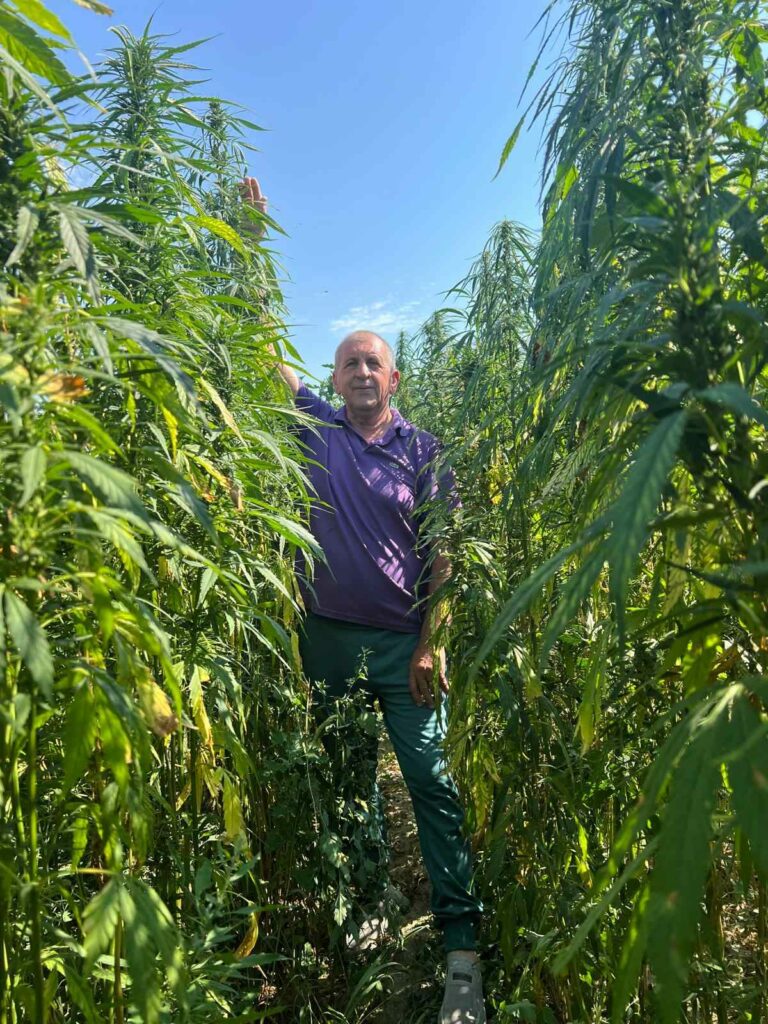Industrial hemp – a solution for climate change adaptation?
As drought continues to affect southern Moldova year after year, agricultural producers are increasingly confronted with significant crop losses. In this context, industrial hemp may represent a viable alternative crop.
Viaceslav Grigoriță, President of the Association of Hemp Producers and Processors of Moldova, highlights the growing interest among farmers in cultivating this plant:
“The year 2025 marked a turning point, as a new law was passed allowing the cultivation of hemp. We now have the first areas under cultivation and have monitored how the crop adapts to drought conditions. The field results are promising. I believe that next year the cultivated area will double, reaching at least 500 hectares. We also have a new law aligned with EU regulations – Law No. 201/2025 – which will enter into force in 2026. ANSA will be the authority responsible for monitoring and issuing cultivation permits,” says Grigoriță.

Ion Grecu, a farmer from southern Moldova, is one of the early adopters who decided to grow industrial hemp:
“I’ve been farming for years before turning to hemp – corn, sunflower, wheat, rapeseed, and others. We tried everything. Water is a serious issue in our region, and the climate has changed dramatically. We felt the need to find a solution not just to survive in agriculture, but to actually turn a profit. That’s why we decided to grow hemp.”
Despite facing harsh climatic conditions, sowing late, and using low-quality seeds, Grecu reports that the crop performed well:
“We’ve planted a total of 180 hectares of hemp. After harvesting, we’ll dry and store it. Depending on how things evolve next year, we might even develop a small processing facility for fiber extraction. Hemp oil is also an option, but our focus is primarily on fiber. As for the market, we’ve seen local interest, but in the medium and long term, we’re also targeting export. This year, we’ll focus more on the domestic market, but we hope to start exporting as early as next year.”
Other producers are also showing interest in this crop, but currently, Moldova lacks adequate processing infrastructure – not even basic drying facilities are available.
Viaceslav Grigoriță emphasizes the need to educate producers on hemp cultivation technologies and post-harvest processes. The association, along with its members, has visited hemp producers in other countries, including Romania, to better understand the full production chain.
Here are the key steps outlined by Grigoriță:
- choosing the right land and preparing it
- obtaining the cultivation permit
- carrying out the actual cultivation process
“Of course, this process requires specialized seeders and harvesting equipment – especially if the focus is on seed production. For fiber production, the process is even more complex, involving special harvesters, specific storage conditions, and modern imported machinery for fiber extraction,” adds the president of the Association.
Grigoriță also notes that domestic consumption of industrial hemp oil is growing, and Moldovan producers have the potential to replace imports with locally made products:
“To develop this sector, we need ongoing dialogue between producers and state institutions, as well as government support through subsidies and other forms of assistance and promotion,” he concludes.
